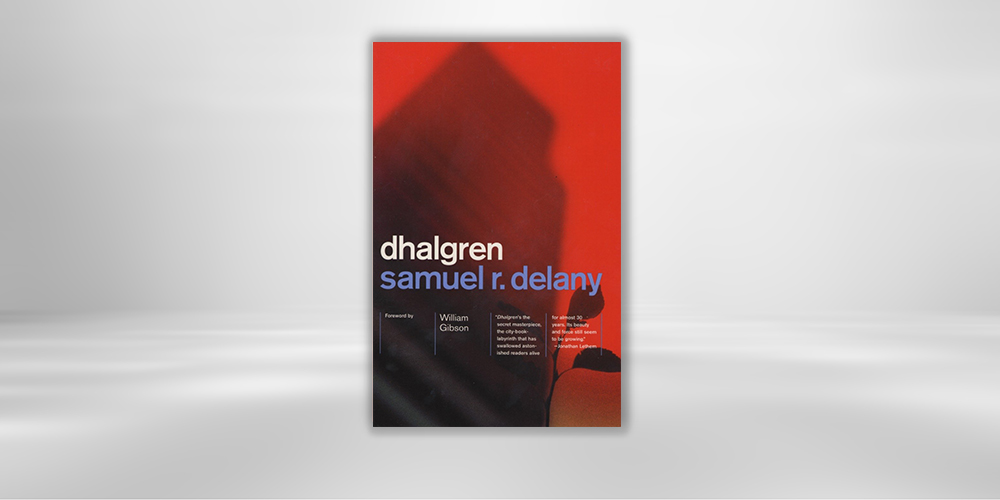While scrolling through the headlines this morning,Watch The Silencing Online you might see a few that read "Google Nest Audio Review," but this isn'tthat. At the time of writing, I've only spent 24 hours with Google's new (and Mark Ronson-approved) $99 smart speaker. So these are just my initial impressions.
Here at Mashable, we believe in a work-life balance. And since I received my Nest Audio review unit the day after it was announced, that means not working over the weekend to meet Google's tight turnaround for coverage.
This is all to say: A full review is in the works, so keep an eye out for that. But for now, here are some things you can look forward to.
I've owned the original Google Home for three years now, and I never really thought much of its design. Its mismatched body and base always stuck out like a sore thumb in both my kitchen and living room. But since I relied on it so much, whether to play music or ask questions, I learned to live with its look. Plus, it's been so long since Google updated the design of its smart speaker (aside from releasing interchangeable base colors), I figured this was the best it was going to get.
 It's about damn time this thing got a new look. Credit: brenda stolyar / mashable
It's about damn time this thing got a new look. Credit: brenda stolyar / mashable And then, the Nest Audio came along, making me question why I never realized how dated the Google Home looked.
For starters, the Nest Audio abandons the circular design of its predecessor for a rectangular shape with curved edges. It's also fully wrapped in fabric, giving it a more seamless look that's easier on the eyes. Its touch controls are easy to use and responsive, too: Tap the left corner to lower the volume; tap the right to raise it; and tap the middle for pause or playback.
But this design technically isn't new — Google clearly pulled inspiration from its Nest Mini and Google Home Max, which are both also encased in fabric and have much softer aesthetics. So, if you're loyal to the Nest lineup and already have those devices scattered throughout your home, the Nest Audio will fit in nicely.
It comes in similar colors as the Nest Mini, too: chalk, charcoal, sand, sage, and sky. Sadly, Google sent me the chalk color. It's fine in the sense that it easily blends in with any furniture, but I was hoping for a pop of color.
 The entire speaker is covered in fabric except for the base. Credit: brenda stolyar / mashable
The entire speaker is covered in fabric except for the base. Credit: brenda stolyar / mashable  A mute switch for those of you who are paranoid about Google listening at all times Credit: brenda stolyar / mashable
A mute switch for those of you who are paranoid about Google listening at all times Credit: brenda stolyar / mashable The device is compact too, which is both a blessing and a curse. While its small footprint means you'll have an easy time finding a surface for it in the house, it looks kind of bare on its own. Google says it's best enjoyed in pairs, mainly because of its stereo pairing feature (which allows you to connect two Nest Audios for stereo sound).
But I think it was designed to be placedin pairs as well because otherwise it looks kind of lonely and sad. At $99 each, I am not saying you have to buy two of these for the sake of interior decor. But if you feel as weird about it as I do, you might have to get creative with how you place it.
 I just feel like I need another one on the other side. Credit: brenda stolyar / mashable
I just feel like I need another one on the other side. Credit: brenda stolyar / mashable I really do think it's a beautiful-looking speaker, but I still have this weird urge to swap it out with the Google Home. Perhaps that's what happens when you wait too long to update a smart speaker. But maybe my attachment issues are also partly to blame here.
Look, I'm no audiophile. But I can assure you this device will be properly inspected by an audio expert (who will use words like "tinny," distorted," "canny," and "sharp" when describing how the speaker sounds) for the full review.
In the meantime, I was able to accurately identify one thing with my own ears: The Nest Audio sounds a lot less muffled than the original Google Home. When I'd first plugged it in and played a few songs, I immediately noticed a clarity in sound that I wasn't used to on its predecessor.
According to Google, the Nest Audio doesn't sound as muffled because, unlike the Google Home, it doesn't come with passive radiators. Allow me to explain.
 I can confirm there's at least somewhat of a difference in sound. Credit: brenda stolyar / mashable
I can confirm there's at least somewhat of a difference in sound. Credit: brenda stolyar / mashable When you take apart the Google Home, you'll find a 50mm full range driver on the front that's responsible for reproducing the frequencies of the song you're listening to. To help provide that full frequency range, it relies on passive radiators to achieve greater levels of bass. However, that also results in a muffled sound.
Since the Nest Audio features a 75mm woofer for bass, it's able to access the entire frequency range and provide more bass depth, so it no longer needs the help of passive radiators. Essentially, you're only hearing the pure bass produced by the woofer which gives you punchier, more precise audio.
If you're contemplating buying the Nest Audio, I'd recommend basing your decision on the size of the space you're planning to use it in.
At my apartment in NYC, I keep a Google Home Mini in my bedroom and a Google Home in the living room. Since my room is super small, the Mini is more than capable of filling the space with audio when I'm playing music or podcasts. I can also lower the volume enough that it doesn't bother my roommates. Whereas the Google Home is my go-to speaker for when I have guests over and want to play music that reaches all the rooms in the apartment.
That same logic applies to the Nest Audio — I'd reserve this one for larger rooms in the house like the kitchen, family room, or basement. Even the bedroom I'm currently testing the Nest Audio in (also known as the room in my parents' house), which is four times the size of my room in NYC, is too small for this speaker. What's more, I've been keeping it at low volume while playing music so as not to disturb my brother who's working in the next room.
Prior to the official launch of the Nest Audio, a promotional video released by Google seemed to allude to the possibility that the speaker would be portable with a built-in battery.
 There's no portability to be found here. Credit: brenda stolyar / mashable
There's no portability to be found here. Credit: brenda stolyar / mashable But Google says it decision to skip out on portability had to do with two factors: cost and functionality. Basically, the company focused on making sure this thing sounded the best it could for its price point, packing in a woofer and tweeter.
The company also wanted to make sure its users would still receive all the benefits that come with Google Assistant and constant Wi-Fi connectivity, like controlling your smart home products or retrieving music from the cloud. So, even though you're able to move it from room to room or to the backyard (if the Wi-Fi reaches that far), your portability is ultimately limited.
It is possible that Google might release an accessory that's similar to the portable battery base it offered for the original Google Home. But that decision will likely be based on user feedback over time.
 Its "portability" depends on nearby outlets. Credit: brenda stolyar / mashable
Its "portability" depends on nearby outlets. Credit: brenda stolyar / mashable Its lack of portability also coincides with its lack of weatherproofing. Google doesn't recommend using the Nest Audio in bathrooms and it's not formally rated for use as an outdoor speaker. That means you shouldn't leave it out in the rain, and you probably shouldn't use it for pool parties, either.
While I can easily distinguish between the sound quality of a cheap $30 Bluetooth speaker and a more expensive one, my ears don't pick up on the nuances that come with critiquing audio. And, according to Google, the Nest Audio isn't for those discerning types, anyway. It's really meant for those who are content with the sound and convenience the Nest Mini offers, and simply want an upgrade for bigger rooms in the house.
Even though I have yet to really put the Nest Audio to the test, one thing is already crystal clear: This isn't a speaker for audiophiles. It's for smart home junkies.
In fact, I'm probably Google's ideal customer.
Topics Google
Previous:Contingent No More
 NYT Connections Sports Edition hints and answers for May 19: Tips to solve Connections #238
NYT Connections Sports Edition hints and answers for May 19: Tips to solve Connections #238
 What’s Inside That Giant Cross? by Steven E. Jones
What’s Inside That Giant Cross? by Steven E. Jones
 Lovehoney sale: Up to 60% off + free gift with $60+ purchase
Lovehoney sale: Up to 60% off + free gift with $60+ purchase
 The Phony Warrior by Yoshiharu Tsuge
The Phony Warrior by Yoshiharu Tsuge
 Hurricane Laura's impact lingered with nightmarish mosquito swarms
Hurricane Laura's impact lingered with nightmarish mosquito swarms
 Poets on Couches: Tess Taylor by Tess Taylor
Poets on Couches: Tess Taylor by Tess Taylor
 How to improve your self
How to improve your self
 Poets on Couches: Mary Szybist Reads Amy Woolard by Mary Szybist
Poets on Couches: Mary Szybist Reads Amy Woolard by Mary Szybist
 Watch how an old Venus spacecraft tumbled before crashing to Earth
Watch how an old Venus spacecraft tumbled before crashing to Earth
 Best soundbar deal: Amazon Fire TV Soundbar for under $100
Best soundbar deal: Amazon Fire TV Soundbar for under $100
 Make Me an Honorary Fucking Ghostbuster! by Samantha Irby
Make Me an Honorary Fucking Ghostbuster! by Samantha Irby
 Poets on Couches: Monica Youn by Monica Youn
Poets on Couches: Monica Youn by Monica Youn
 Quarantine Reads: Dhalgren by Tynan Kogane
Quarantine Reads: Dhalgren by Tynan Kogane
 Best iPad deal: Save $132 on Apple iPad (10th Gen)
Best iPad deal: Save $132 on Apple iPad (10th Gen)
 Make Me an Honorary Fucking Ghostbuster! by Samantha Irby
Make Me an Honorary Fucking Ghostbuster! by Samantha Irby
 How Pandemics Seep into Literature by Elizabeth Outka
How Pandemics Seep into Literature by Elizabeth Outka
 What is a TikTok 'fear food' challenge?
What is a TikTok 'fear food' challenge?
 Keeping Hope Alive
Keeping Hope Alive
 Amazon Prime will cost an extra $2.99 or play ads starting Jan. 29
Amazon Prime will cost an extra $2.99 or play ads starting Jan. 29
Photographer explores the public and private personas of your favorite actorsOculus Medium handsSilicon Valley's elite gather at Trump TowerSilicon Valley elites just played an awkward round of icebreakers with TrumpEight million food processors recalled after broken blades end up in peoples' foodMerciful chrome extension replaces photos of Trump with kittensThe guy who reviews London chicken shops made a glorious TV appearanceTrump rally suckerCheck out this collection of 14,000 'Jerry Maguire' VHS tapesWorld's best parents brought their daughter's stuffed animal to life for ChristmasHow Oculus could revive the 3DStar Trek Discovery casts Sonequa MartinTSA's tragic tale of a giant abandoned teddy bear gets a twistLucid Motors Air is a luxury electric car with a 400New site visualises how you rode with Uber in 2016How Oculus could revive the 3DMashReads Podcast: 'Cat's Cradle' is the absurdist book we should all readInstead of giving tickets, this police department is asking for toys for children in needMore than 1 billion Yahoo users hacked in new security breach, company revealsTikTok ban has been extended, Trump signs executive order James Webb Space Telescope discovered water in exoplanet WASP Astronomy Photographer of the Year 2022 finalists: All the otherworldly photos Google is letting you dig through the treasured Vogue image archive NASA reveals latest design for returning samples from Mars Dogs are smarter than you think, scientists find Best delivery deal: $15 off $100 Doordash gift cards at Best Buy Douyin shifts e James Webb Telescope vs Hubble: See how the images compare Wordle today: The answer and hints for June 11 NASA scientists discover human Australia vs. Namibia 2024 livestream: Watch T20 World Cup for free With 'Apple Intelligence,' Apple enters the AI era on its own terms Scientists spot puzzling, unusually perfect holes on the ocean floor Deep sea scientists find strange, transparent fish on ocean expedition Surprise James Webb Space Telescope image revealed by President Biden Best tablet deal: The Samsung Galaxy Tab S9 FE+ is just $489.99 at Amazon Wordle today: The answer and hints for June 12 The first Webb telescope image is warped and psychedelic. Here's why. Temu hits $20 billion sales in H1 fueled by expansion efforts: report · TechNode SpaceX just launched South Korea's first mission to the Moon
1.6575s , 10180.890625 kb
Copyright © 2025 Powered by 【Watch The Silencing Online】,Fresh Information Network